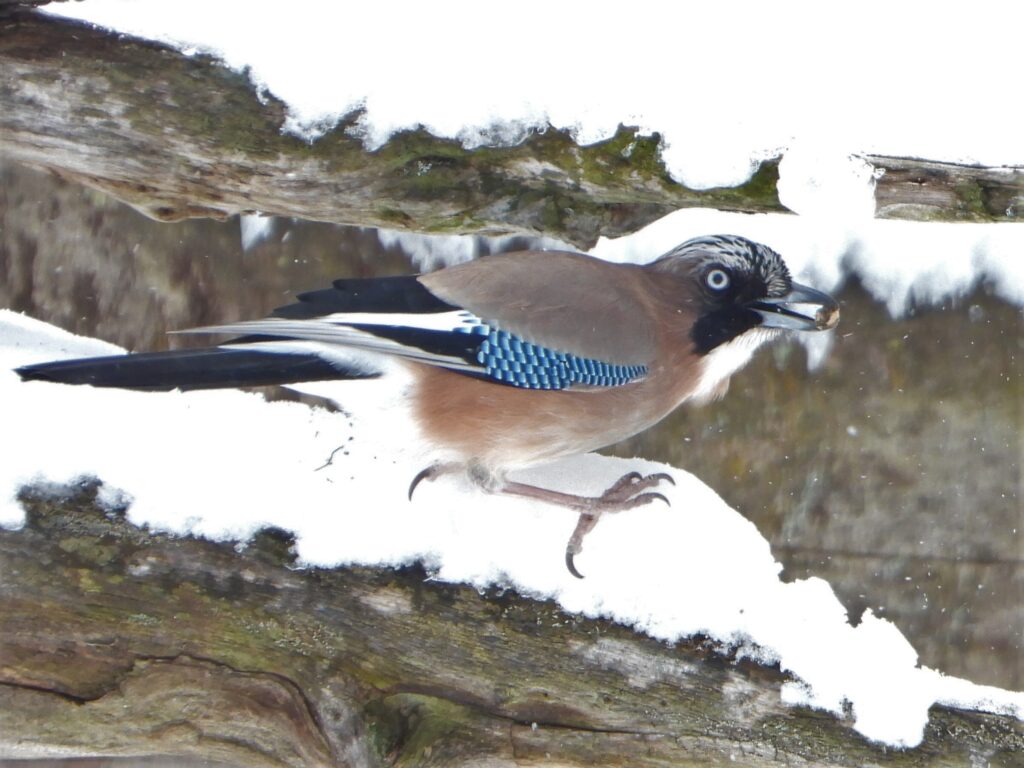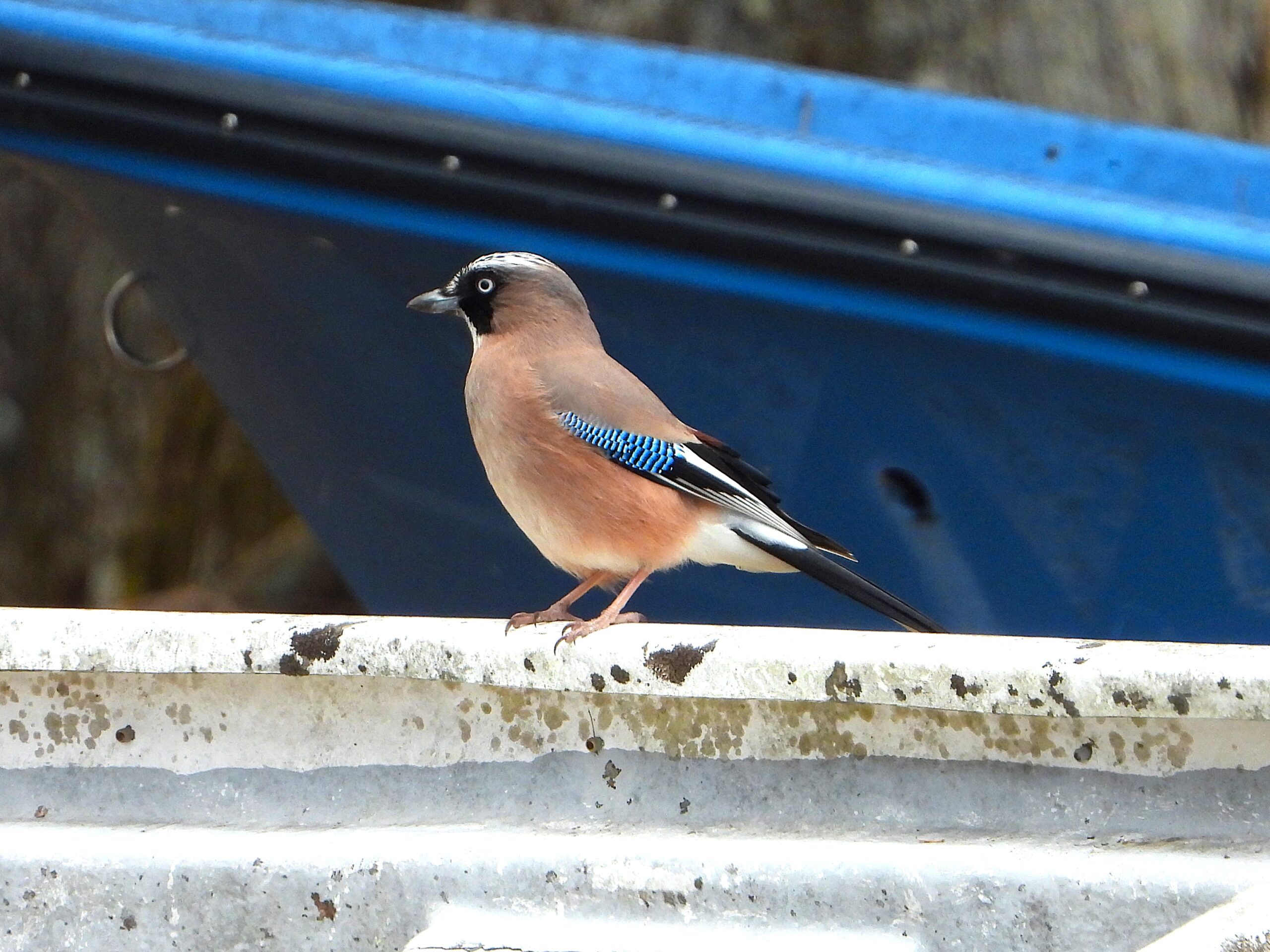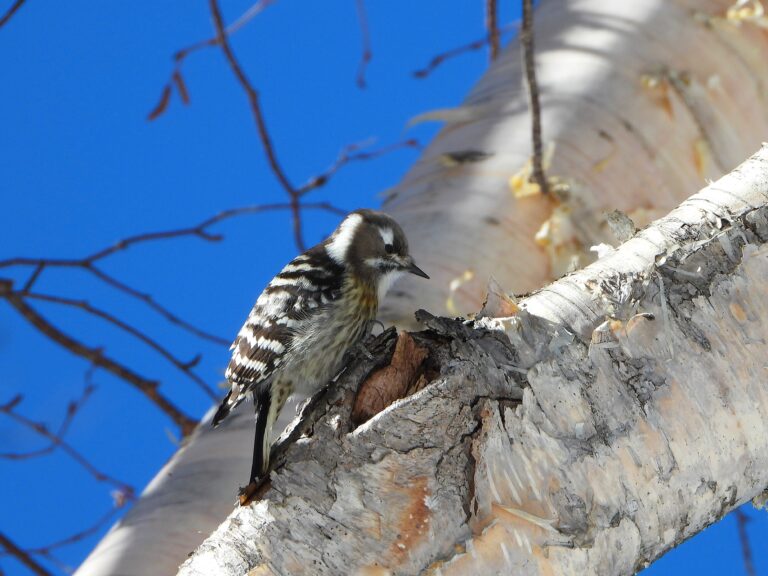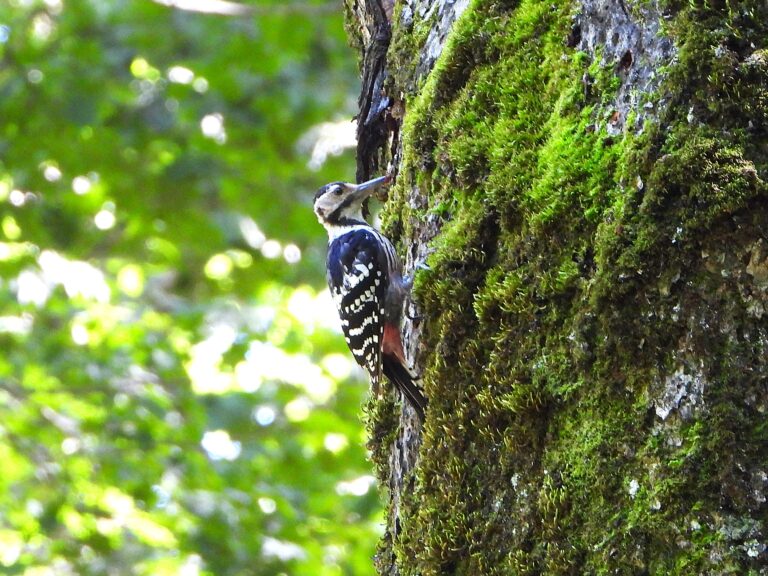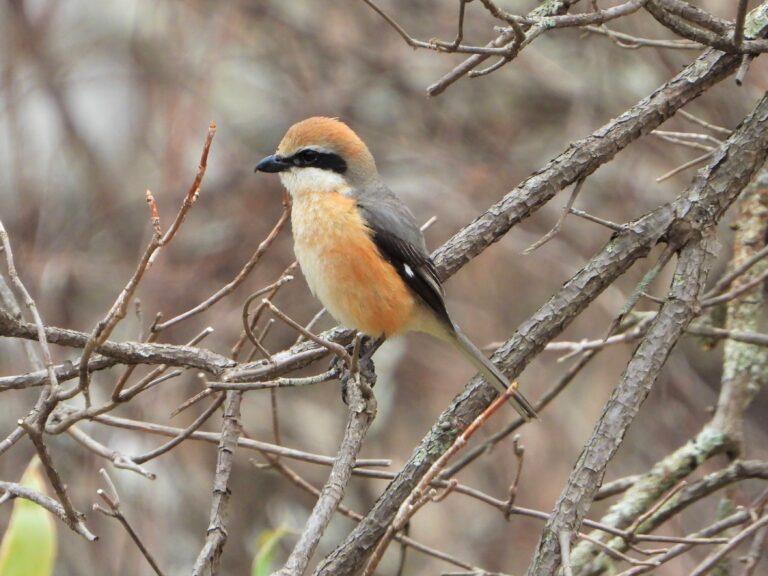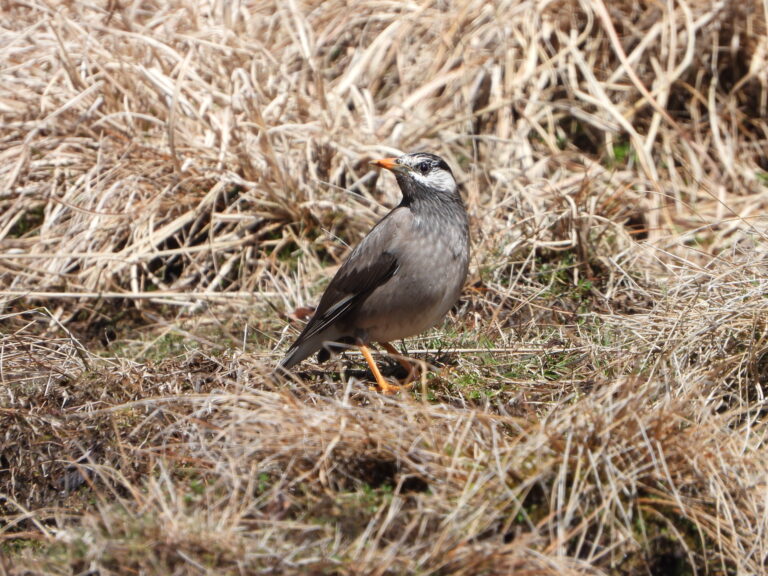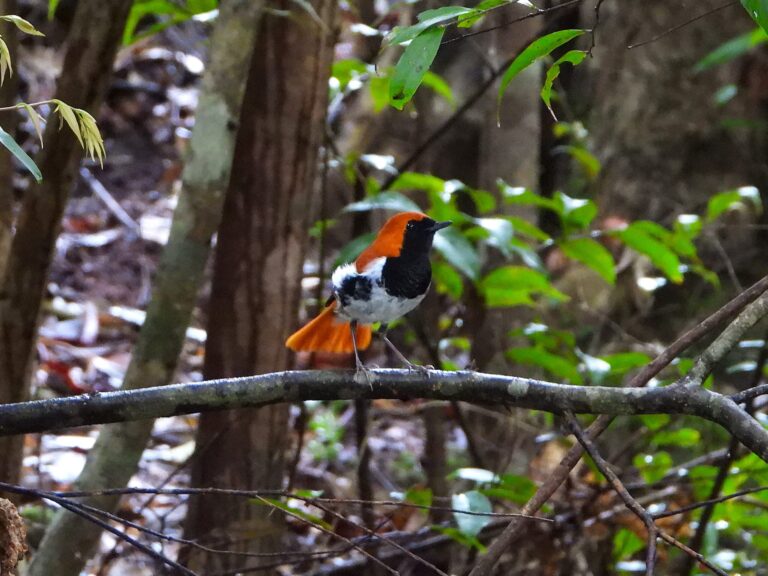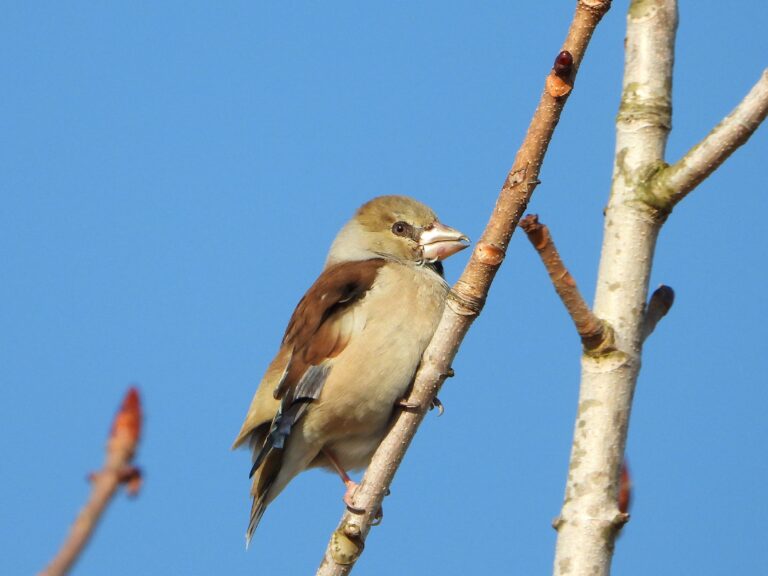Eurasian Jay (Garrulus glandarius) – Wildlife of Japan
Introduction
The Eurasian Jay is a charismatic woodland corvid best known for its harsh “jaa” call and brilliant blue wing panel. In Japan, it is a year-round resident across much of the archipelago and a frequent voice in mixed forests, from lowland groves to mountain woods. Skilled at caching acorns, jays play an important role in dispersing oaks and other trees.
Appearance
A medium-sized jay about 32–36 cm long with a pinkish-brown body, black tail, white rump, and a striking barred blue, black, and white patch on the wings. The face shows a dark “moustachial” stripe framing a pale throat, and the crown appears finely streaked.
Japanese populations vary regionally: on Honshu–Shikoku–northern Kyushu (japonicus) birds usually have pale irides and bold blackish facial markings, while the Hokkaido form (brandtii, “Miyama-kakesu”) has darker irides and a warmer brown head. Island subspecies occur on Sado (tokugawae) and Yakushima (orii).
Habitat & Distribution
Prefers broadleaf, mixed, and coniferous forests, as well as forest edges, temple groves, and large parks. In Japan, japonicus inhabits Honshu, Shikoku, northern Kyushu, and Tsushima, brandtii occurs in Hokkaido, and island forms exist on Sado and Yakushima. Some individuals move to lower elevations or milder lowlands in winter.
Where to See in Japan
Reliable places include Karuizawa Wild Bird Sanctuary in Nagano, where they are active year-round, and many large parks around Tokyo such as Inokashira Park and seasonally at Tokyo Port Wild Bird Park. In Hokkaido, the Miyama-kakesu subspecies is common in forests around Kushiro and Akan.
Behavior
Vocal and watchful, jays give loud, rasping alarm calls and are excellent mimics. They are also prolific hoarders, burying acorns and other seeds for later—behavior that inadvertently plants new trees and shapes forest dynamics. Their flight is buoyant, and the white rump and bright wing patches flash through the canopy.
Diet
Omnivorous—feeding on acorns, beechnuts, fruits, insects, and other invertebrates, and occasionally taking eggs or nestlings. They forage both on the ground and in trees, intensifying caching behavior in autumn.
Reproduction
Breeding starts in spring. Pairs build twig nests high in trees, laying 3–6 eggs. The female incubates for 16–19 days; the chicks fledge about 19–23 days after hatching. Both parents feed and protect the young for several weeks after fledging.
Conservation
Listed as Least Concern, with a stable, widespread population across Eurasia. Protecting oak and mixed forests helps sustain local numbers.
Author’s Impression
A flash of electric-blue wings in a quiet forest always feels magical. If you stop along a ridge trail and listen, the jay usually reveals itself by its harsh call—then slips between trees, white rump gleaming, an acorn clasped like treasure in its bill.
